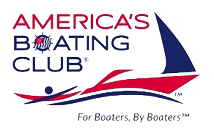|
Odorless, Tasteless, Colorless, and Lethal
Just in case you did not read it, this column is a paraphrase of a very important article put out by Boat US Magazine, May 2005. They note that 458 boaters have been involved in non-fatal CO poisonings, and 113 are known to have died as a result of CO poisoning, since 1990. The Coast Guard suspects that we have misread many drowning deaths for years, by not attributing them correctly to CO poisoning.
Carbon monoxide can enter your boat in a variety of ways, and surprisingly more boaters perish on deck than in their below-deck cabins. Therefore, if you have a gasoline inboard or generator you need to be particularly knowledgeable about the poisoning symptoms. Be aware that CO detectors are required per industry standards on any boat with a gas generator or gas engine that has enclosed spaces below deck. It would be a great idea to place a placard on the stern of your boat, as well; a warning for less experienced boaters that might be tempted to surf off a swim platform, or attempt to hold onto the back of the boat while the engine is exhausting. California has already made these stern placards a requirement.
An inboard gasoline engine will generate about 10,000 ppm (parts per minute) of CO. If your vessel is rafted in the vicinity of engines in use, or if exhaust is somehow blocked by a seawall or other non-permeable object, or if the wind is blowing in a direction that prevents dispersion of the gas into the air, but creates instead a back-draft into your boat, you might experience the signs of CO poisoning. Houseboats have been particular culprits over the years as they used to be designed with an air cavity under their deck. This space is where the CO accumulated, and was responsible for many deaths, until the Coast Guard and Congressional Hearings recalled houseboats designed in that manner, in 2001.
The signs of CO poisoning usually present first as a headache at about 400 ppm (Remember the information from above, that your inboard engine generates about
10,000 ppm) Symptoms such as dizziness, belly pain, nausea, and shortness of breath would present at about 800 ppm, often with convulsions beginning within about 45 minutes, and death within about two hours. Some of the later symptoms might also include red skin, confusion, and fainting or coma. 1,200 ppm would pose an immediate threat to your life, yet, this is a number that can often be found on the open stern deck of many boats. At 3,200 ppm you could die in 30 minutes; at 6,400 ppm death might occur within 10 – 15 minutes; 12,000 ppm equals = immediate death. Permanent brain damage is possible in survivors of severe poisoning.
The airspace under the swim platform on many of the Lake Powell houseboats has been measured and is found to be in that 7,000 to 30,000 ppm range. It is no wonder then that the EPA, Coast Guard, National Park Service, the Department of the Interior, Congress, and the United States Power Squadron, to name just a few, are all interested in making people aware of these misread deaths, and the overlooked danger of CO. In fact, the USPS has changed its initial boating classes to reflect this CO poisoning information, and members will be hearing a great deal more about this subject in the near future, because boats emit far more CO than cars since they usually do not have any after-treatment for their exhaust.
Catalytic converter-equipped engines might be the answer to the after-treatment and carbon monoxide poisoning, but so far, tests have only been done on freshwater stern drives and inboard engines. Salt water corrodes more easily than fresh water, and engines can easily become blocked because of it, which might elicit fires, exhaust leaks, or adjustments and/or changes in the standards for other hoses and pressures in the engine. Westerbeke has already designed, and is currently selling, their new line of generators called Safe-CO that have been found to be approximately 99% effective in fresh water environments. Other manufacturers are following with a goal of meeting the new 2008 EPA, Carbon Monoxide requirements.
More information on CO Poisoning can be found at the Boat U.S. Foundation for Boating Safety and Clean Water at http://www.boatus.com/foundation/toolbox/co.htm
They list there, 7 Things That You Can Do to Safeguard Against CO Poisoning:
| * |
Avoid known locations where the gas can be present. |
| * |
Have regular maintenance done on your engine and exhaust system by a trained technician. |
| * |
Install a CO detector in the cabin of your boat. |
| * |
Be aware that CO can accumulate when a boat is running its engine or generator while at a dock or sea wall. |
| * |
Open hatches and keep fresh air circulating throughout the boat to avoid exhaust
fumes from re-entering the aft part of the boat – the station wagon effect. |
| * |
Turn off the engine or generator when people swim near the boat. Do Not allow teak surfing on your boat. |
| * |
Be aware that if a passenger has the symptoms of seasickness it could be CO poisoning and they should immediately be moved to fresh air. |
|
